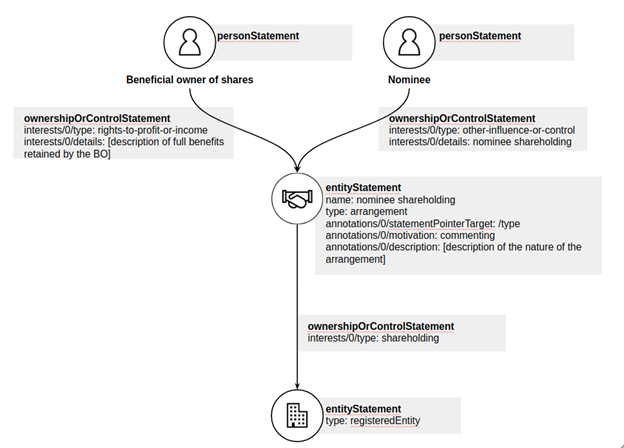How to capture information on nominees in beneficial ownership data

Photo by David Werbrouck on Unsplash
Nominees are people who act on behalf of others to carry out official roles or responsibilities relating to corporate vehicles such as companies, trusts and other types of legal entities and arrangements.
While many nominee arrangements have legitimate business purposes, these arrangements can also be used to purposefully obscure who really owns or controls a corporate vehicle. Nominees can deliberately be incorrectly disclosed as beneficial owners as part of disclosure requirements. Nominee relationships can be difficult to verify as incorrect, which can be an obstacle to knowing who truly owns and controls corporate vehicles.
In its 2022 publication Signatures for Sale, the Stolen Asset Recovery Initiative found that nominee arrangements constitute a “major vulnerability in the on-going campaign to curb the use of untraceable shell companies in financial crime”.
Under the updated Recommendation 24 from the Financial Action Task Force (FATF), countries are required to take measures to prevent and mitigate the risk of the misuse of nominee shareholdings and nominee directorships. One example is requiring nominee shareholders and directors to disclose their nominee status and the identity of their nominator. For countries that opt for this approach and have central beneficial ownership registers, this information should be included in the register. In addition, nominee status should be included in public information.
Guidance published by FATF in March 2023 defines a nominee as “a natural or legal person holding a role in a company as an agent acting upon instructions of a nominator who has a more substantive claim to control and/or ownership of the company,” adding that “in many cases, the nominator is the beneficial owner of the company”.
In order to capture high-quality beneficial ownership data, it is necessary to capture information on both the nominees and the nominators as well as the entity to which they are linked alongside information about the nature of the relationship.
Countries can meet this FATF requirement by using the current version of the Beneficial Ownership Data Standard (BODS) developed by Open Ownership and our technical partners at Open Data Services as illustrated below.

A BODS diagram showing how to represent a nominee shareholding relationship with an entity where publishers want to capture information on both a nominee and a beneficial owner (or nominator)
BODS data consists of a collection of ordered statements describing information about ownership or control relationships, details on entities, and details on the natural persons who own or control entities. This is laid out in the BODS data model.
At present, capturing data on nominees involves:
- Creating separate person statements for the nominee and the beneficial owner (or nominator).
- Ownership-or-control statements then link both the nominee and nominator via an arrangement (nominee shareholding in our example) to a corporate vehicle.
- Further statements can in turn be produced to link this entity or these people to any other entities with which they have relationships.
As part of work to develop version 0.4 of BODS, we have set out plans to better represent nominee arrangements in beneficial ownership data. We plan to introduce nominee and nominator to our interestType codelist and allow for nominee shareholding and nominee directorship to be listed as categories of entitySubtype. This is part of a wider effort to be able to model and capture all types of beneficial ownership interests.
If you have any questions about this topic, you can email [email protected] to connect with the data support team at Open Ownership.
Related articles and publications
Publication type
Blog post
Topics
Beneficial Ownership Data Standard,
Trusts and legal arrangements
Sections
Technology
Open Ownership Principles
Detail
